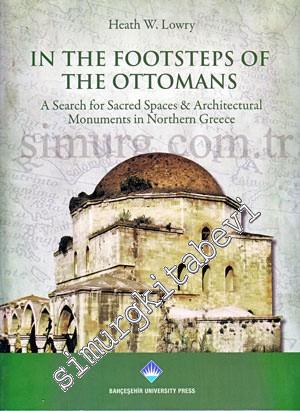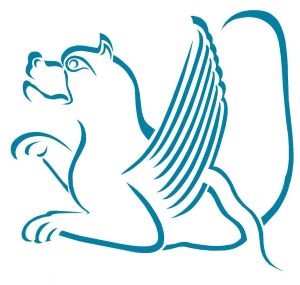
Lowry konuyu, bu alanda 20. yüzyılın başlarında çalışmalar yapmış olan ve Anadolu ile Balkanlardaki kutsal pagan mekânlarına ne şekilde Hıristiyan bir kimlik verildiğini ve bu mekanların daha sonra Müslüman kutsal mekanlarına dönüştürülmüş olduğunu inceleyen ilk akademisyen olan İngiliz arkeolog F. W. Hasluc'ın ayak izlerini takip ederek ele alıyor. Lowry'nin cevabını bulmak üzere yola çıktığı soru ise: Birinci dünya Savaşının sonunda Osmanlı İmparatorluğunun çökmesinin ardından, kuzey Yunanistan'daki Müslüman kutsal mekânlarının akıbeti ne oldu?
Lowry'nin anlatımı, heyret verici sayıda kutsal Müslüman mekanının, sonrasında nasıl Hıristiyan kutsal mekanlarına dönüştürüldüğünün (ya da duruma göre, yeniden dönüştürüldüğünün) izinden gidiyor. Günümüzde her ikisi de Ortodoks Kilisesi olan Yıldırım Bayezit'in Drama'daki daha önce hiç ele alınmamış 14. yüzyıl camiinden, Selanik'teki Osmanlı 3. Ordu Karargâhının camiine kadar Osmanlı mimarisinin önemli eserlerini çok geniş bir yelpazede irdeleyen yazar, sadece camilerin değil, mezarların ve hatta ağaç kültleri ve totem taşlarına kadar çeşitlilik arz eden meselelerin de akıbetini de gün ışığına çıkarıyor.
Yazarın, geçtiğimiz beş yıl boyunca kuzey Yunanistan'daki seyahatlerinin bir yansıması olan bu çalışma, daha önce yayınlamış olduğu, Osmanlı Döneminde Balkanların Şekillenmesi adlı eserinin mutlaka okunması gereken bir devamı niteliğindedir. Bahçeşehir Üniversitesinin Onuncu Yılını Kutlama Etkinlikleri Çerçevesine gururla yayınladığı bu iki eser, hem, Yunanistan sınırları içinde yer alan ve ne zamandır ihmal edilmiş olan Osmanlı mimari mirasına, hem de sonrasında birçok Müslüman kutsal mekânının kimliklerinin değiştirilmesine dair elimizdeki bilgilere büyük bir katkı anlamına gelmektedir. In this study, Heath Lowry takes the reader on a series of fascinating journeys through the former Ottoman territories which today comprise northern Greece. Part travelogue and part history of a once key part of the discovery of destroyed and/or long forgotten Ottomans monuments, in combination with a detailed examination of the current status of those which survive today. Lowry approaches his subject by following the footsteps of the early 20th century British archeologist, F. W. Hasluck, who was the first scholar to examine the manner in which one time pagan sacred spaces in Anatolia and the Balkans had first been subsumed as Christian sites, and then in turn converted into Muslim sacred spaces. The question Lowry sets out to answer is: what happened to the Muslim sacred spaces in northern Greece following the collapse of the Ottoman Empire at the end of the First World War? His account traces the manner in which a surprisingly large number of such sites were subsequently converted (or reconverted as the case may be) into Christian sacred spaces. Running the gamut from major works of Ottoman architecture, such as the previously unstudied 14th century mosque of Yıldırım Bayezid in Drama, to the mosque of the Ottoman 3rd Army Headquarters in Thessaloniki (Selanik), both of which today are Orthodox Churches, he traces the fate of not only mosques, but tombs, and even subjects as varied as tree cults and totem stones. This work, whish reflects the author's travels in northern Greece throughout the past five years, is a must-read companion piece to his earlier: The Shaping of hte Ottoman Balkans. Together these two works, which Bahçeşehir University is proud to have published as parts of its Tenth Anniversary Commemorations, mark a major contribution to our knowladge of both the long neglected Ottoman architectural legacy in Greece and to the subsequent subsumption of many Muslim sacred spaces. (Kitabın İçinden)
Lowry konuyu, bu alanda 20. yüzyılın başlarında çalışmalar yapmış olan ve Anadolu ile Balkanlardaki kutsal pagan mekânlarına ne şekilde Hıristiyan bir kimlik verildiğini ve bu mekanların daha sonra Müslüman kutsal mekanlarına dönüştürülmüş olduğunu inceleyen ilk akademisyen olan İngiliz arkeolog F. W. Hasluc'ın ayak izlerini takip ederek ele alıyor. Lowry'nin cevabını bulmak üzere yola çıktığı soru ise: Birinci dünya Savaşının sonunda Osmanlı İmparatorluğunun çökmesinin ardından, kuzey Yunanistan'daki Müslüman kutsal mekânlarının akıbeti ne oldu?
Lowry'nin anlatımı, heyret verici sayıda kutsal Müslüman mekanının, sonrasında nasıl Hıristiyan kutsal mekanlarına dönüştürüldüğünün (ya da duruma göre, yeniden dönüştürüldüğünün) izinden gidiyor. Günümüzde her ikisi de Ortodoks Kilisesi olan Yıldırım Bayezit'in Drama'daki daha önce hiç ele alınmamış 14. yüzyıl camiinden, Selanik'teki Osmanlı 3. Ordu Karargâhının camiine kadar Osmanlı mimarisinin önemli eserlerini çok geniş bir yelpazede irdeleyen yazar, sadece camilerin değil, mezarların ve hatta ağaç kültleri ve totem taşlarına kadar çeşitlilik arz eden meselelerin de akıbetini de gün ışığına çıkarıyor.
Yazarın, geçtiğimiz beş yıl boyunca kuzey Yunanistan'daki seyahatlerinin bir yansıması olan bu çalışma, daha önce yayınlamış olduğu, Osmanlı Döneminde Balkanların Şekillenmesi adlı eserinin mutlaka okunması gereken bir devamı niteliğindedir. Bahçeşehir Üniversitesinin Onuncu Yılını Kutlama Etkinlikleri Çerçevesine gururla yayınladığı bu iki eser, hem, Yunanistan sınırları içinde yer alan ve ne zamandır ihmal edilmiş olan Osmanlı mimari mirasına, hem de sonrasında birçok Müslüman kutsal mekânının kimliklerinin değiştirilmesine dair elimizdeki bilgilere büyük bir katkı anlamına gelmektedir. In this study, Heath Lowry takes the reader on a series of fascinating journeys through the former Ottoman territories which today comprise northern Greece. Part travelogue and part history of a once key part of the discovery of destroyed and/or long forgotten Ottomans monuments, in combination with a detailed examination of the current status of those which survive today. Lowry approaches his subject by following the footsteps of the early 20th century British archeologist, F. W. Hasluck, who was the first scholar to examine the manner in which one time pagan sacred spaces in Anatolia and the Balkans had first been subsumed as Christian sites, and then in turn converted into Muslim sacred spaces. The question Lowry sets out to answer is: what happened to the Muslim sacred spaces in northern Greece following the collapse of the Ottoman Empire at the end of the First World War? His account traces the manner in which a surprisingly large number of such sites were subsequently converted (or reconverted as the case may be) into Christian sacred spaces. Running the gamut from major works of Ottoman architecture, such as the previously unstudied 14th century mosque of Yıldırım Bayezid in Drama, to the mosque of the Ottoman 3rd Army Headquarters in Thessaloniki (Selanik), both of which today are Orthodox Churches, he traces the fate of not only mosques, but tombs, and even subjects as varied as tree cults and totem stones. This work, whish reflects the author's travels in northern Greece throughout the past five years, is a must-read companion piece to his earlier: The Shaping of hte Ottoman Balkans. Together these two works, which Bahçeşehir University is proud to have published as parts of its Tenth Anniversary Commemorations, mark a major contribution to our knowladge of both the long neglected Ottoman architectural legacy in Greece and to the subsequent subsumption of many Muslim sacred spaces. (Kitabın İçinden)




























